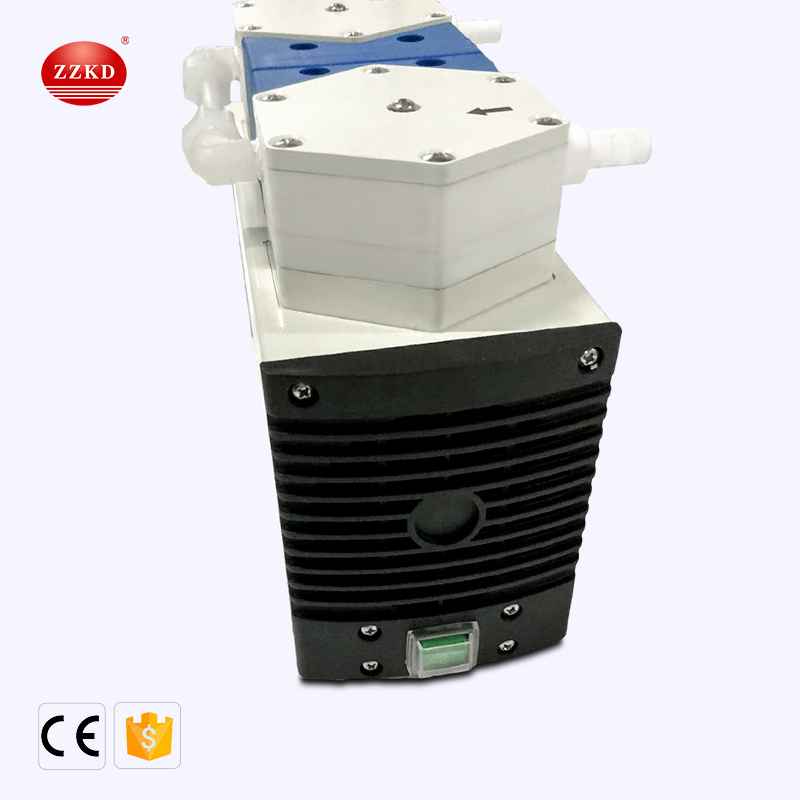How dose a diaphragm pump works
The diaphragm pump is driven by a motor by an elastic diaphragm mounted on an eccentric crankshaft to reciprocate up and down. The cavity is deformed, and the medium can be drawn in and discharged. A relatively high degree of vacuum can be achieved. It is suitable for collocation with all kinds of instruments and equipment that require extremely high vacuum, such as rotary evaporators, vacuum drying ovens, centrifugal concentrators, and so on.

How dose a diaphragm pump works
When the diaphragm pump is working, the crank connecting rod mechanism is driven by the electric motor to drive the plunger to reciprocate. The movement of the plunger is transmitted to the diaphragm through the working fluid (usually oil) in the cylinder, causing the diaphragm to move back and forth. The cylinder head of the diaphragm pump is mainly separated from the working fluid by the diaphragm. When the diaphragm moves to the side of the transmission mechanism, the working room in the pump cylinder is under negative pressure and sucks the liquid; when the diaphragm moves to the other side , The liquid is discharged. The liquid to be delivered is separated from the working fluid by the diaphragm in the pump cylinder, and only contacts the pump cylinder, suction valve, discharge valve and the inner side of the diaphragm of the pump, and does not touch the plunger and the sealing device, which makes the plunger etc. Important parts work completely in oil medium and are in good working condition.
The diaphragm must have good flexibility and good corrosion resistance, usually made of polytetrafluoroethylene, rubber and other materials. The pot bottom-shaped parts with meshes on both sides of the diaphragm are installed to prevent the diaphragm from locally deforming too much, and are generally called diaphragm restrictors. Diaphragm pumps have good sealing performance, can easily achieve leak-free operation, and can be used to transport corrosive liquids such as acids, alkalis, and salts, and high-viscosity liquids.
The structure of the diaphragm pump
The diaphragm pump is mainly composed of two parts: the transmission part and the diaphragm cylinder head. The transmission part is a driving mechanism that drives the diaphragm to agitate back and forth. Its transmission forms include mechanical transmission, hydraulic transmission and pneumatic transmission. Among them, hydraulic transmission is widely used. The working part of the diaphragm pump is mainly composed of a crank connecting rod mechanism, a plunger, a hydraulic cylinder, a diaphragm, a pump body, a suction valve and a discharge valve, etc., among which a drive mechanism and a reciprocating plunger are composed of a crankshaft connecting rod, a plunger and a hydraulic cylinder The pumps are very similar.
Compared with other pumps, the diaphragm vacuum pump is small in size, compact in design, does not occupy laboratory space, has a long service life, and is maintenance-free. If you need to replace the diaphragm, just unscrew the pump head screw and replace it. It can work continuously for 24 hours without worrying about the interruption of the experiment due to overheating protection of the pump. No oil, no pollution to the medium, no waste of water resources, quiet and more environmentally friendly. It is resistant to strong chemical corrosive gas or steam medium.


